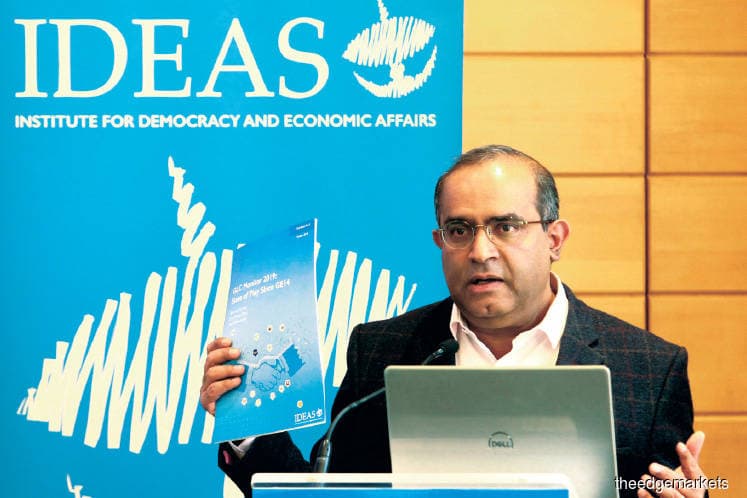
This article first appeared in The Edge Financial Daily on October 31, 2019
KUALA LUMPUR: Prime Minister Tun Dr Mahathir Mohamad is still the “de facto” finance minister despite not officially holding the portfolio, as he has consolidated control over key statutory bodies and ministries in the country, according to Institute for Democracy and Economic Affairs (IDEAS) senior fellow Professor Dr Edmund Terence Gomez.
At the launch of IDEAS’ GLC (government-linked companies) Monitor 2019: State of play since GE14 report, Gomez — who is also dean of the Economics and Administration Faculty at Universiti Malaya — said Dr Mahathir has moved control of Khazanah Nasional Bhd and Permodalan Nasional Bhd (PNB) to the Prime Minister’s Department (PMD) from the ministry of finance (MoF), despite being prohibited from holding the MoF portfolio after the 14th general election last year.
“[Dr] Mahathir knew if he took control of Khazanah and PNB, he would be taking control of the largest enterprises in Malaysia,” he explained.
At end-July last year, Dr Mahathir named himself as chairman of Khazanah and Yayasan Pelaburan Bumiputra, which maintains PNB as an investment vehicle. At the same time, he also appointed PKR deputy president Datuk Seri Mohamed Azmin Ali, deemed his ally, to both boards.
The move has been widely criticised as going against Pakatan Harapan’s manifesto, which stated that the appointment of state and national GLC board members will be made based on merit and professionalism, not based on politics.
‘MoF’s roles reduced in favour of Bersatu-led ministries, political allies’
At the event yesterday, Gomez also pointed out the MoF has been “dismembered”, with its roles reduced in favour of the PMD, the ministry of entrepreneur development (MED), the ministry of rural development (MRD) and the ministry of economic affairs (MEA).
Notably, these ministries, which control key GLCs and statutory bodies, are led by people from Dr Mahathir’s own party Bersatu and political allies, Gomez pointed out.
For instance, control of key GLCs and statutory bodies had been moved to the MEA, which is under the control of Mohamed Azmin. The MRD, on the other hand, is headed by Bersatu women’s chief Datuk Seri Rina Mohd Harun, while the MED is headed by Bersatu’s Datuk Seri Mohd Redzuan Md Yusof.
The academic also shared that some GLCs under the MoF have been moved to the MRD, MED and PMD, thus consolidating GLCs under Bersatu, he said.
In particular, Gomez said bumiputera GLCs such as FGV Holdings Bhd were parked under the MEA, while statutory bodies, like the Rubber Industry Smallholders Development Authority, were placed under the purview of the MRD.
In the case of the MED, it controls financing for small and medium enterprises (SMEs) such as SME Corp Malaysia.
According to Gomez, 98% of businesses in Malaysia are SMEs.
This shows the system which existed under the previous Barisan Nasional regime continues to the present day, with control of the corporate sector having been consolidated in the same way as before, he added.
To remedy this issue, Gomez said the “GLC” world needs to firstly be reconstructed, and there needs to be an account of how many GLCs are present.
“I honestly think even those in government today, including the MoF, don’t really know how many GLCs there are today,” Gomez remarked.
Secondly, Gomez said work needs to be done to distinguish between “good and bad” GLCs and set up transparent measures and guidelines for these entities.